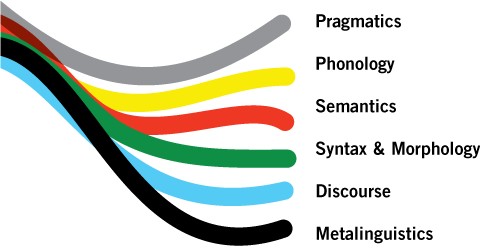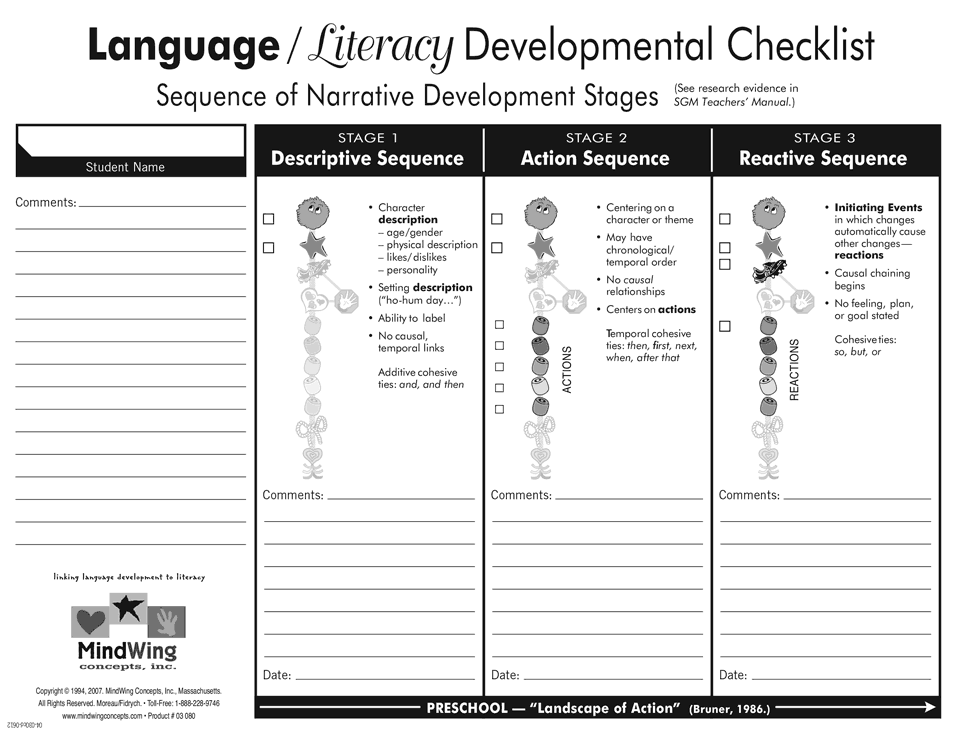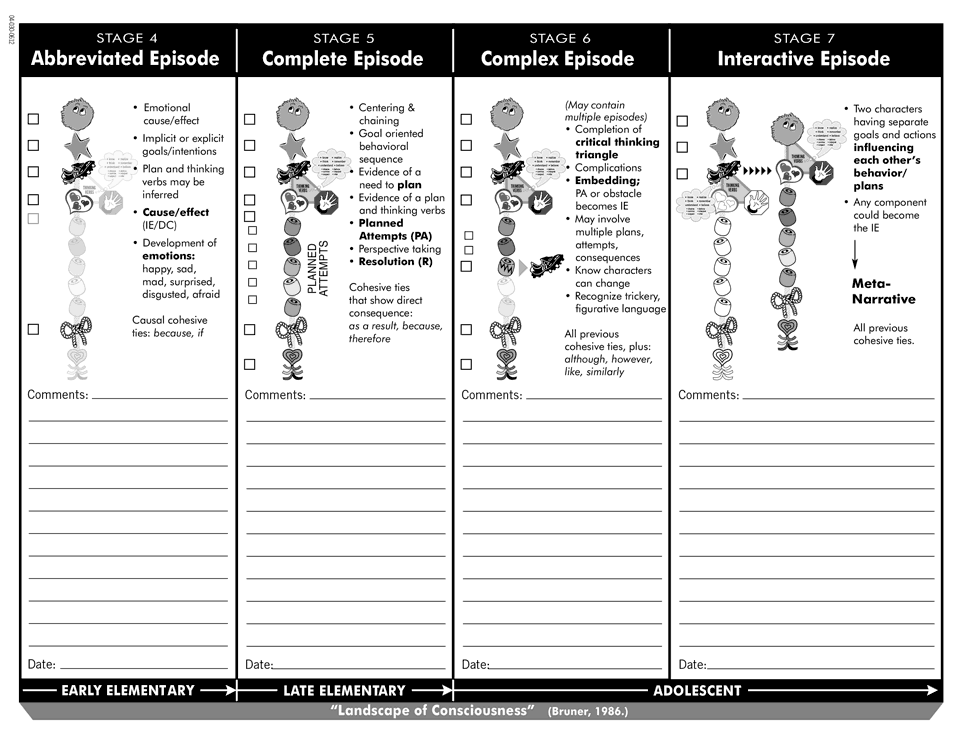Response to Intervention (RtI)
 Response-to-Intervention (RtI) is part of a problem solving, team approach to inform instruction and bolster student achievement both academically and socially. There are three or four tiers of intervention, each one increasing in time and intensity.
Response-to-Intervention (RtI) is part of a problem solving, team approach to inform instruction and bolster student achievement both academically and socially. There are three or four tiers of intervention, each one increasing in time and intensity.
MindWing's Story Grammar Marker®, Braidy the StoryBraid®, Talk to Write, Write to Learn™ and ThemeMaker® are the tools through which the intervention is delivered to your students. MindWing’s Data Collection & Progress Monitoring Process provides a way to track student progress and inform instruction.
MindWing Concepts’ approach is applicable for large and small groups of students within each of the tiers and provides a foundation and a vehicle for explicit, systematic instruction. Our focus is development of the oral language to organize, tell, retell, comprehend, and write both narrative (stories) and expository (information) texts. Our specific academic areas of focus are comprehension and oral/written expression.
We provide a developmental methodology, which is based in research, along with hands-on intervention tools and progress monitoring protocols for tracking academic improvement in the curricular areas of comprehension and writing. MindWing’s child-friendly tools & teachers manuals, along with our data collection & progress monitoring tools, spark collaboration in the classroom among teachers, specialists, SLPs, literacy coaches, etc. Drawing on the expertise of all of the educators is essential to the success of RtI. See our Instructional, Intervention Materials to learn more.
Since our methodology centers on individual/self expression, development of emotional responses to literature and life as well as perspective taking, it is applicable as a supplemental program for school wide discipline interventions and small group counseling sessions.
Prior to reading further about how MindWing specifically supports each Tier of Intervention, we suggest you read Our Methodology to learn more.
MindWing and the Tiers of Intervention
Support for Tier 1 Instruction
(MindWing within your existing program):
MindWing Concepts' methodology and instructional materials support Tier 1 instruction by focusing on the elements of comprehension as delineated in most school district reading programs. Tier 1 of Response-to-Intervention is often thought of a prevention step involving observation, analysis of data and documentation of skill levels of struggling students within general education classrooms. All the language/literacy areas identified by the National Reading Panel (NICHD, 2000) come into play (phonemic awareness, alphabetic principle, vocabulary, reading fluency and comprehension. Our focus at MindWing Concepts is the language and literacy components involved in Comprehension (vocabulary, sentence and discourse levels of language). Knowledge of story structure, prediction, retelling, summarization, asking and answering questions and use of graphic organizers are strategic foci of most reading programs in efforts to teach students strategies to comprehend and monitor their comprehension. MindWing's iconic based tools support all of the above strategies and facilitate the oral language competence that is at the root of comprehension and expression of what one has comprehended.

 At the most basic level, The Story Grammar Marker® and Braidy the StoryBraid® both serve as a visual, tactile and kinesthetic representation of story structure. MindWing's representation of story grammar is taken from linguistic research (Applebee, Stein & Glenn and Westby). Students in the computer/information age are “at-home” with the iconic format. Knowledge of story grammar components and how they, in a cumulative fashion, advance the plot of a story, facilitates the ability to predict. Modeling and thinking aloud with a manipulative is most useful in modeling asking and answering of Wh questions (Who, What, When, Where, Why). Seeing, touching, and moving the icons help show the difference between a retell with inclusion of all-important details and a summary where the details of the middle of the story are systematically reduced. All components of MindWing’s tools and methodology, relate and expand the graphic organizers used by most reading programs.
At the most basic level, The Story Grammar Marker® and Braidy the StoryBraid® both serve as a visual, tactile and kinesthetic representation of story structure. MindWing's representation of story grammar is taken from linguistic research (Applebee, Stein & Glenn and Westby). Students in the computer/information age are “at-home” with the iconic format. Knowledge of story grammar components and how they, in a cumulative fashion, advance the plot of a story, facilitates the ability to predict. Modeling and thinking aloud with a manipulative is most useful in modeling asking and answering of Wh questions (Who, What, When, Where, Why). Seeing, touching, and moving the icons help show the difference between a retell with inclusion of all-important details and a summary where the details of the middle of the story are systematically reduced. All components of MindWing’s tools and methodology, relate and expand the graphic organizers used by most reading programs.
 Many students have difficulty using “boxes” as graphic organizers and benefit from the iconic format of MindWing’s maps/graphic organizers. Read Our Methodology to learn more. Simple whole-class modeling of episodic structure in iconic format assists many children who need explicit knowledge of the components of a story so they are able to respond to the questions asked within the most reading programs. MindWing’s Critical Thinking Triangle® (above graphic) is what makes MindWing’s methodology stand apart in the area of narratives, thinking, communication, social emotional development, conflict resolution. It is often a missing component from traditional graphic organizers.
Many students have difficulty using “boxes” as graphic organizers and benefit from the iconic format of MindWing’s maps/graphic organizers. Read Our Methodology to learn more. Simple whole-class modeling of episodic structure in iconic format assists many children who need explicit knowledge of the components of a story so they are able to respond to the questions asked within the most reading programs. MindWing’s Critical Thinking Triangle® (above graphic) is what makes MindWing’s methodology stand apart in the area of narratives, thinking, communication, social emotional development, conflict resolution. It is often a missing component from traditional graphic organizers.
 The Strands of Oral Language (Pragmatics, Phonology, Semantics, Syntax & Morphology, Discourse, and Metalinguistics), taken together, theoretically form the base of a story, as the braid forms the base of the Story Grammar Marker® and Braidy, the StoryBraid®. Without increasing competence in all of the strands over time, a student will have difficulty in literacy endeavors. Each of the strands aligns itself with the components of reading focused upon by the National Reading Panel and most reading programs: phonemic awareness, alphabetic principle, semantics, reading fluency and comprehension (discourse level: sentence development and combining to form conversational, narrative or expository text structure). In short, all the components of reading may be used with the Story Grammar Marker® and/or Braidy the StoryBraid® during instruction and intervention. The hands-on iconic design of the above tools, in the hands of an experienced teacher using the district’s reading program, will provide necessary structure to enable children at-risk to access the general curriculum.
The Strands of Oral Language (Pragmatics, Phonology, Semantics, Syntax & Morphology, Discourse, and Metalinguistics), taken together, theoretically form the base of a story, as the braid forms the base of the Story Grammar Marker® and Braidy, the StoryBraid®. Without increasing competence in all of the strands over time, a student will have difficulty in literacy endeavors. Each of the strands aligns itself with the components of reading focused upon by the National Reading Panel and most reading programs: phonemic awareness, alphabetic principle, semantics, reading fluency and comprehension (discourse level: sentence development and combining to form conversational, narrative or expository text structure). In short, all the components of reading may be used with the Story Grammar Marker® and/or Braidy the StoryBraid® during instruction and intervention. The hands-on iconic design of the above tools, in the hands of an experienced teacher using the district’s reading program, will provide necessary structure to enable children at-risk to access the general curriculum.
Strategic Tier 2 Intervention (MindWing within your existing program)
Students needing Tier 2 Intervention in the area of comprehension and expressing what one has comprehended, need explicit teaching of the components of an episode (the basic unit of plot). Baseline data should be collected from four sources:
- Observation of the student and his/her oral and written comprehension responses.
- Data collected from sources within the district's reading program. (Stories in the reading text can be used to do this.)
- Teacher consultation/input regarding grade level standards.
- Student competency in retelling a story, reflecting its episodic structure and answering factual and inferential Wh Questions about the story after the retelling, would provide necessary data for Tier 2 Intervention.
MindWing Concepts’ Data Collection Tools Facilitate This Step
(see examples below).


Following analysis of data, intensive and explicit modeling is necessary to show the relationship among story grammar components within episodic structure of the reading program’s stories. Students need to practice retelling and answering questions using the Story Grammar Marker® and/or Braidy the StoryBraid® manipulatives. MindWing Concepts’ maps may be used to graphically show how the oral story maps onto print. Students practice with manipulatives and graphic organizers. Connections with general curriculum are explicitly shown on an ongoing basis. (Read our Explicit, Systematic Methodology to learn more.)
Intervention would be designed and implemented over an eight-week period in small groups within the classroom. Depending on grade level expectations, retelling/question answering are monitored in terms of number included/deemed correct, linguistic quality of response, and progression toward episodic completion. Progress toward the implementation of prediction and comprehension monitoring would be noted as students work together and learn using MindWing Concepts’ tools and activities.
Intensive Tier 3 Intervention (MindWing within your existing program)
Intensive Tier 3 Intervention involves the use of MindWing Concepts' data collection and progress monitoring tools for narrative comprehension and expression orally and/or in writing of comprehended material. Students in need of this intensive intervention are those who do not respond to the Tier 2 modeling and explicit intervention at the episodic level. These students may have working memory retrieval issues and/or have difficulty orally communicating using literate oral language. English Language Learners, coming from cultures having a different style of narrative at home, children along the Autism Spectrum, those having language learning problems as preschoolers, children who have experienced trauma, among many other students, may be in need of intensive intervention.
Data is analyzed from Tier 2 Data collected. In addition to that information, MindWing Concepts' Data Collection Protocols provide a Developmental Sequence of Narrative Development.
Using these Protocols, stages of narrative development are determined and intensive lessons using the Lessons provided within Braidy, the StoryBraid® Teacher’s Manual and the Story Grammar Marker® Manual for developmental mapping, and Talk to Write, Write to Learn™ Manual to facilitate step-by-step progress toward written stories and responses. The lessons in the Manual were designed by MindWing Concepts in collaboration with Haskins Laboratories at Yale in a US Office of Education Developmental Study of First Grade Reading within high priority districts in Connecticut.
Please see samples of data collection and progress monitoring protocols below
or see our data collection and progress monitoring tools™ to learn more.




